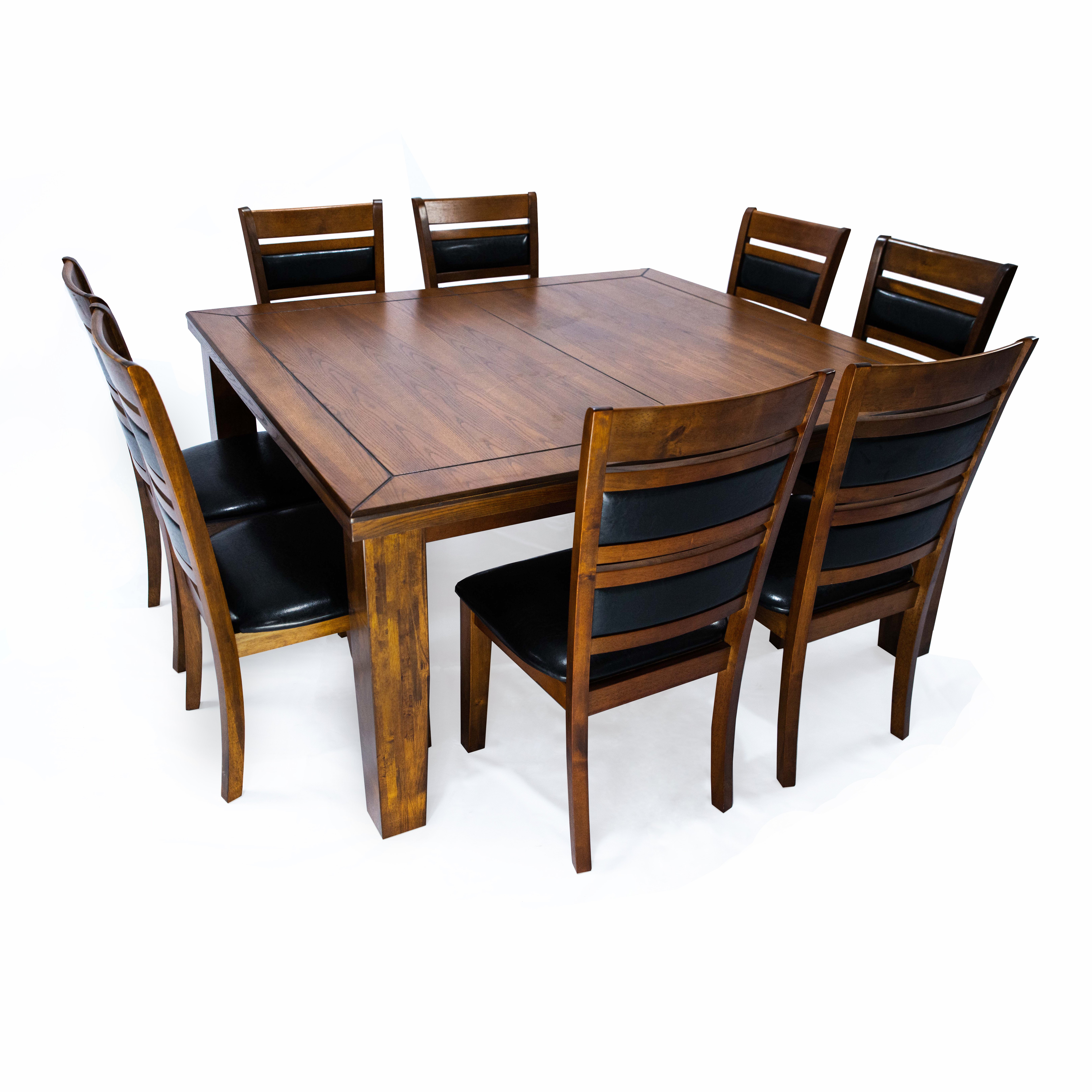Considering Space and Layout for an 8-Chair Dining Table: 8 Chair Dining Table Size

Choosing the right placement for your 8-chair dining table is crucial for both functionality and aesthetics. A poorly planned layout can lead to cramped spaces and awkward traffic flow, undermining the enjoyment of your dining area. This section will explore optimal space requirements and various layout options to help you create a welcoming and efficient dining room.
Minimum Space Requirements Around an 8-Chair Dining Table
Adequate space around an 8-chair dining table is essential for comfortable movement and efficient serving. Insufficient clearance can lead to collisions and a feeling of claustrophobia. A minimum of 48 inches (122 cm) is recommended between the table edge and any adjacent walls or furniture. This allows for easy chair pull-out and comfortable passage. For larger chairs, or if you anticipate frequent use of the serving area, consider increasing this clearance to 60 inches (152 cm). Imagine a scenario where two people are seated on opposite sides of the table, each needing to stand. With insufficient space, the chairs might collide, causing inconvenience and even potential damage.
A visual representation would show an 8-chair rectangular table, with each chair needing approximately 24 inches (61 cm) of space. The minimum distance between the table and any wall should be clearly indicated, along with the space required between the table and any other furniture such as a buffet or sideboard. The diagram should visually demonstrate the flow of movement around the table, illustrating comfortable passage.
Dining Table Placement Options
The placement of your dining table significantly impacts the overall flow and feel of your dining room. Several factors, including traffic patterns, buffet placement, and the room’s natural focal points, should be considered.
- Central Placement: This classic arrangement positions the table in the center of the room, creating a balanced and formal atmosphere. It works well in larger rooms with ample space around the table. This layout maximizes the visual impact of the table and allows easy access from all sides. Consider a large, round or oval table for this style to enhance the sense of openness.
- Against a Wall: Placing the table against a wall is a space-saving option, ideal for smaller dining rooms. However, this limits access to one side and can restrict traffic flow. To mitigate this, ensure there is ample space for chairs to be pulled out and for people to move around the table comfortably. A rectangular table is usually the best choice in this configuration.
- In a Bay Window or Alcove: This provides a charming and intimate setting. The natural light from the window adds to the ambiance, while the alcove creates a defined dining area. A round or oval table often complements this type of setting, especially if the alcove is relatively small.
- Near a Buffet or Sideboard: Positioning the table near a buffet or sideboard enhances functionality, making serving easier. The distance between the table and the buffet should allow for comfortable movement between the two. This setup is especially useful for larger gatherings.
Ideal Dining Room Layout with an 8-Chair Table, 8 chair dining table size
Imagine a spacious dining room bathed in warm, natural light from a large window. An elegantly crafted rectangular mahogany dining table, seating eight comfortably, is positioned against one wall, leaving ample space for easy chair movement. A matching mahogany sideboard is placed to one side, within easy reach of the table, providing convenient storage and serving space. The floor is covered in a rich, dark hardwood, contrasting beautifully with the lighter walls painted in a soft, creamy color. Subtle, recessed lighting illuminates the table from above, while a stylish pendant light hangs over the sideboard. The overall style is classic and sophisticated, creating a warm and inviting ambiance. Elegant upholstered chairs surround the table, adding to the luxurious feel of the room. A large area rug defines the dining space and adds a layer of warmth and texture.
